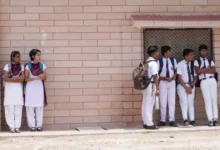An Insider’s Guide: Eight Crucial Points To Consider Before Traveling to Chittorgarh
Eight Things To Recognize Before Traveling To Chittorgarh
The magnificent city of Chittorgarh, steeped in legends of bravery and magnificence, provides an enthralling voyage into the rich past of Rajasthan. Get important information before visiting this well-known fort city to ensure that your vacation is genuinely beneficial. Here are eight things to know, from tasting hot curries to admiring stunning forts.

1. Enjoy yourself in Grand Chittorgarh Fort
One of the largest forts in India, Chittorgarh Fort occupies a sizable territory.
Admire the exquisite sculptures, palaces, and architecture.
See the Vijay Stambh, Kirti Stambh towers, and Rana Kumbha Palace, among other things.
Don’t miss the historical sound and light display.
Extra details:
Situated on a 180-meter-tall hill, the Mauryan construction dates back to the 7th century.
endured several assaults as the powerful Rajput kingdom’s capital, Jauhar, or the three times when royal ladies committed self-immolation to escape being taken prisoner.
2. Find Temples with Rich Spiritual Content
Relatively respected for their history and architecture are ancient Hindu and Jain sanctuaries.
Visit the Goddess Kali-focused Kalika Mata Temple to see the elaborate sculptures.
Explore the Meera Bai Temple, associated with the mystical poet and follower of Krishna.
Admire magnificent Jain temples such as the Adinath and Shantinath Temples.
More details: The Padmavati Temple has exquisite mirror decorations and brickwork.
On the site of Rana Kumbha’s execution, the Neelkanth Mahadev Temple is located.
buildings constructed throughout time in a variety of architectural styles inspired by monarchy
3. Take in Stories of Valor and Giving
Chittorgarh is associated with stories of valor and tenacity.
The queen executed jauhar, or self-immolation, in Padmini Palace.
Before Udaipur was founded, Maharana Udai Singh II was born at Kumbha Palace.
During Emperor Bahadur Shah’s invasion, women engaged in jauhar.
Extra details:
The fort was besieged by Alauddin Khilji in an attempt to seize Queen Padmini.
32 times, 16,000 Rajput women participated in jauhar contests to win the fort.
Rana Kumbha built the victory tower, also known as Vijay Stambh, to commemorate victory.
4. Take in Bright Festivals
magnificent festivities that take place all year round.
Performances commemorate traditional occasions including Teej, Gangaur, and Navratri.
Take in the vibrant processions, folk dances, and customs.
A good time to visit bazaars and purchase fabrics and handicrafts.
Extra details:
With a traditional parade, the Maharana Pratap Jayanti honors the legendary warrior monarch Shitla Mata Mela fair.
Thousands attend religious events like Janmashtami and Ram Navami.5. Explore Lakes and Palaces
There are picturesque lakes and palaces all throughout the place.
See the Rana Kumbha Palace perched on a cliff with a view of the town.
View the holy Gaumukh Reservoir, which is surrounded by hills and rural landscapes.
Visit the neighboring Bassi Sanctuary to see animals like leopards.
Further details: Sukhadi Circle has an evening fountain performance.
The main Chittorgarh Fort is next to Seven Gates Fort. Kalika Mata Temple is located on a plateau near a river and is accessible via cable car.
6. Honor traditions and customs
The area has a rich cultural legacy and ingrained traditions.
When visiting holy places and the ancient city, wear modest clothing.
Before taking pictures of shrines or holy ceremonies, ask for blessings.
Salute the people with “Namaste.” Seek advice on customs.
More details: Ladies wear colorful ghagra cholis, while males sport bright safa turbans.
Certain holy lakes and reservoirs forbid fishing.
Temple seva, or selfless service, is ceremonially performed here.
7.Delectable Rajasthani food Savor the fiery Chittorgarh food enhanced with spices and chiles.
Dal-bati-churma lentil dish, served with sweet flour and baked bread, is a must-try.
Savor the ghevar, boondi, ker sangri, and mirchi vadas as well!
savory munchies such as hot laal maas, kachori, and samosas.
Extra details:
Sweet stores provide delicious jalebis and desserts made with milk.
Roadside cafes provide crunchy pakoras and steaming hot chai tea.
Silver Leaf Thaali provides a classic plate filled with a range of foods.
8.Come on Ready for Any Weather Changes
Chittorgarh has mild winters and scorching summers.
July and August saw highs of above 40 degrees Celsius; bring water and wear cotton clothing.
Pack coats for the 10 to 25 degree Celsius winter weather (November to February).
Further details: The best seasons are the winter or the post-monsoon (October/November).
Summer respite is provided by hotel holy water sprinkler services.
Seize spring (February–March) to see the vibrant Holi celebration
amid conclusion, seeing the ancient region of Chittorgarh pays off handsomely when one sees the courageous Rajput character, appreciates the richness of culture, and savors food amid the opulence of the Middle Ages. Uncover this Rajasthani treasure by using these essential pointers for an insider’s viewpoint!







